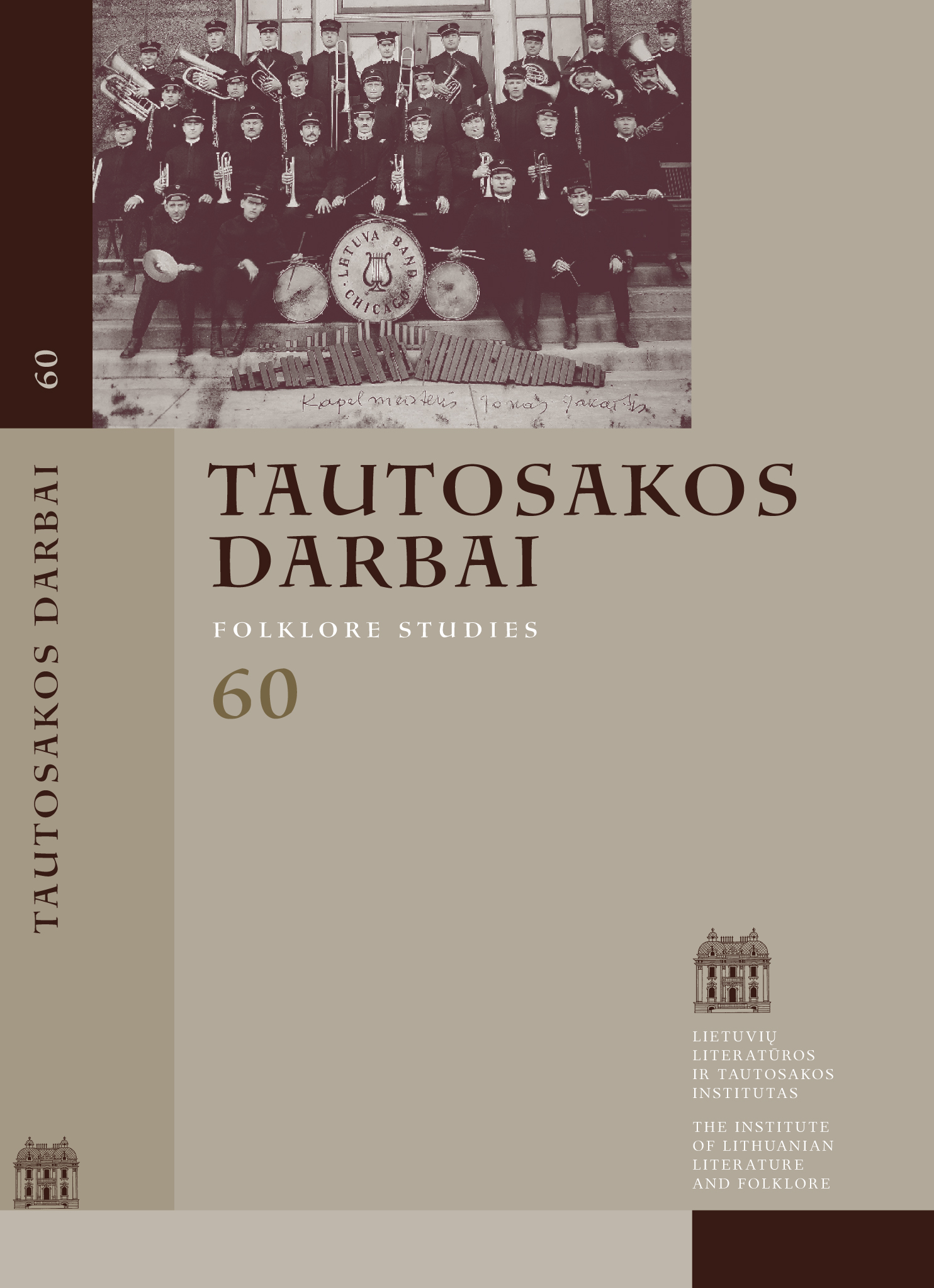Motives of Golden Boughs and Wreath in the Latvian Mythological Songs on the Sun Daughter’s Wedding
Abstract
Latvian mythological songs on the Sun daughter’s wedding or the love relationships and quarrels between the divine celestial beings are characterized by considerable diversity and variety of motives, and frequently by the textual fragmentation as well. In the longer songs, the motive of the tree struck down by Perkūnas stands out as the central and the least varying one, attracting perhaps the most of the scholarly attention.
The mythical circumstances of the tree-striking act by Perkūnas and its motivation and consequences are not completely clear; however, the area for interpretation is widened by the subsequent elaboration of the story line towards the end of the songs. This article focuses on the group of folksongs in which the Sun (in some variants – the Sun’s daughter, an orphan) sheds her tears while picking the golden boughs of the tree in the course of three (in some variants – five) years. Mythological songs representing this story line comprise the types LD 34047 and LD 33802 in the collection by Krišjānis Barons. Throughout the 20th century, numerous additional variants including the motives in question were recorded and stored at the Archives of the Latvian Folklore (LFK). The song lines describing the “wilted leaves” that the Sun’s daughter is picking can be found in the folksong published by Liudvikas Rėza both in Lithuanian and in German (RzD 62).
Employing the textual and comparative analysis, the author of this article discusses the interrelationship between individual fragments (like the tree struck by Perkūnas, the golden boughs picked by the Sun, and the wreath making), or their possibly dissimilar origins, aiming at revealing their folklore symbolism and comparing various interpretations of this story line in different scholarly approaches. The results of the analysis suggest that according to folksongs, the golden boughs of the oak struck down by Perkūnas are most commonly picked by the Sun in the course of three years.
The connection between this fragment and the motive of the tree struck down by Perkūnas is stable enough, while its conservation in the songs could be determined by the popular Latvian folksong symbolic of the broken or frosted tree that signifies female hardships. In the subsequent variants recorded after the Barons’ collection, the semantic distribution is somewhat different: the “apple tree” and “three days” are more frequently encountered. Certain attempts by various researchers at equating this mythical task performed by the Sun to some definite calendar period of one to four years remain debatable and poorly grounded hypotheses. The time formulas including the number “three” are usually employed in Latvian folksongs to indicate an outstanding, prolonged activity or the hardships encountered along the way. The subsequent variations of the story line describing the wreath that is made from the collected golden boughs by a young girl (an orphan) or the Sun’s daughter testify to the influence of other folksongs, as this motive stands in contrast to the previous story line of the song
Downloads
Most read articles by the same author(s)
- Rokas Sinkevičius, The Motif of the Hero’s Clothes Sprinkled with Oak Blood in Latvian Songs and in Martynas Liudvikas Rėza’s Song “Aušrinė” , Tautosakos darbai: Vol. 67 (2024): Tautosakos darbai
- Austė Nakienė, Daiva Račiūnaitė-Vyčinienė, Rokas Sinkevičius, Aušra Žičkienė, Nijolė Laurinkienė, Rūta Žarskienė, Chronicle , Tautosakos darbai: Vol. 53 (2017)
- Rokas Sinkevičius, The Motive of Thunderstruck Tree in Connection to Wedding Customs , Tautosakos darbai: Vol. 56 (2018)
- Rokas Sinkevičius, Not Yet Fully Solved Riddle of the Birth of the Divine Colt (Moon) , Tautosakos darbai: Vol. 49 (2015)
- Rokas Sinkevičius , Dangus virš Baltarusijos prabilo savais vardais , Tautosakos darbai: Vol. 51 (2016)
